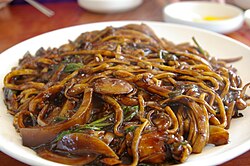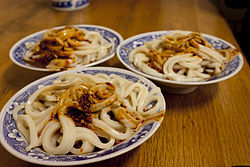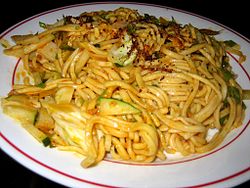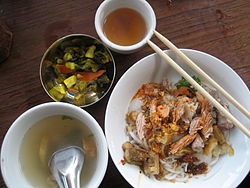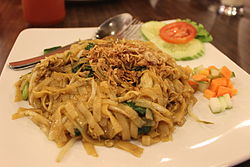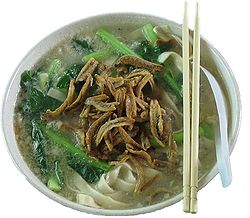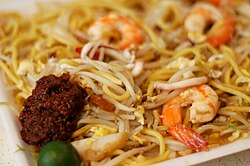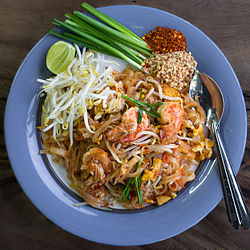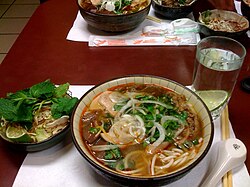

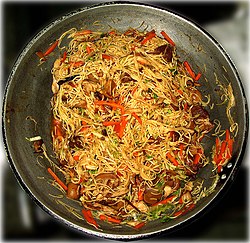

This is a list of notable noodle dishes. Noodles are a type of staple food [1] made from some type of unleavened dough which is rolled flat and cut into one of a variety of shapes. While long, thin strips may be the most common, many varieties of noodles are cut into waves, helices, tubes, strings, or shells, or folded over, or cut into other shapes. Noodles are usually cooked in boiling water, sometimes with cooking oil or salt added. They are often pan-fried or deep-fried. Noodles are often served with an accompanying sauce or in a soup.
Contents
- General
- East Asia
- Chinese
- Hong Kong
- Japanese
- Korean
- Mongolian
- Taiwanese
- Tibetan
- South East Asia
- Burmese
- Cambodian
- Filipino
- Indonesian
- Laotian
- Malaysian
- Singaporean
- Thai
- Vietnamese
- Central Asia
- Kyrgyz
- Uzbek
- South Asia
- Bhutanese
- Nepalese
- India
- Middle East
- Jewish
- Iranian
- Palestinian
- Syrian
- Turkish
- Pan-American
- United States
- Chinese-American
- Hawaii
- Mexican
- Peruvian
- Europe
- Croatian
- German
- Jewish 2
- Polish
- Romanian
- Russian
- Spanish
- Africa
- Algerian
- Egyptian
- Libyan
- Nigerian
- Somali
- Gallery
- See also
- References
- External links


